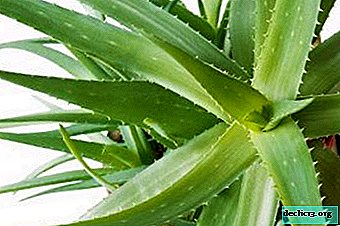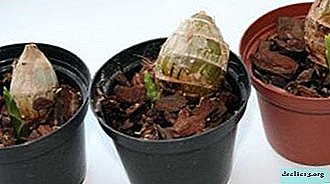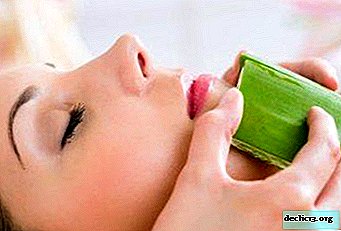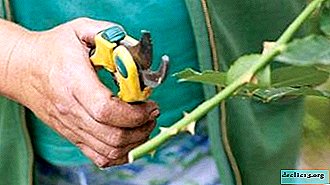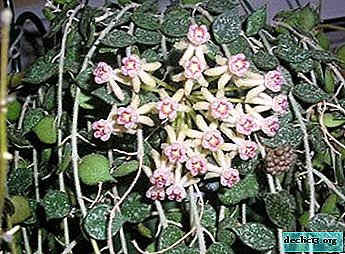Symptoms and treatment of stomatitis in adults and children at home

Inflammation of the oral mucosa is a common dental disease that is extremely difficult to accurately diagnose. Its manifestation is confused with damage to the lips or tongue. In the case of stomatitis, the elements spread to the palate, lips and tongue. In the article I will tell you how to treat stomatitis in adults at home, about the causes and methods of treating this disease.
Causes and symptoms of stomatitis in adults
Every doctor knows that the effectiveness of the treatment of stomatitis directly depends on the correct assessment of the causes of the disease. Based on the results of the evaluation, drugs for treatment are selected.
- Allergy. The cause of stomatitis is an allergic reaction caused by toothpaste, foods, medications or household cleaning products.
- Damage to the mucous membrane. The use of traumatic food and low-quality dentures is not a complete list of factors that lead to the appearance of wounds in the oral cavity. An infection that causes stomatitis enters the body through them.
- Excessive mucosal dryness. It causes the use of inappropriate toothpaste, dehydration, the use of diuretics.
- Vitamin deficiency. The lack of metals, including iron, selenium and zinc.
- Bad habits. People who abuse cigarettes and alcohol are more likely to experience this problem. Nicotine and alcohol lead to toxic poisoning of the mucosa.
- Immune system disorders. When immunity is in order, the mucous membrane of the oral cavity easily copes with its protective function. Once it decreases, the mucosa is much more difficult to resist infections.
- Malnutrition. The abnormal consumption of carbohydrate food badly affects the acidity of saliva, which creates an ideal platform for the appearance of pathologies.
Under the influence of the factors described above, the mucous membrane of the mouth becomes infected and stomatitis appears.
Symptoms of stomatitis
- Red spots and ulcers appear under the tongue and on the inside of the cheeks and lips. Often, the disease is accompanied by an unpleasant burning sensation in the area of these formations.
- Later, the area affected by stomatitis becomes painful and swells. If the disease is caused by a bacterial infection, oval ulcers with a red halo form at the focal point.
- The patient begins to bleed gums, the intensity of salivation increases, there is an unpleasant odor from the mouth. With stomatitis, the temperature can increase, and the lymph nodes located in the neck area slightly increase.
When a person develops this disease, even eating food brings discomfort and is accompanied by pain syndromes.
How to treat stomatitis in adults
Proper and timely therapy is the key to recovery. The duration of treatment reaches several weeks. If you use an integrated approach, you can cope with the disease in a couple of days.
First of all, you need to establish the cause of stomatitis. A visit to the doctor is a must.
- The treatment is represented by local therapy, which includes rinsing, washing, irrigation of the mouth, the use of ointments.
- Without fail, the doctor prescribes antibiotics, antiviral drugs and medications aimed at strengthening immunity to the patient.
Alternative methods of treatment
- With stomatitis, the affected area can be treated with a solution based on hydrogen peroxide. Pour a teaspoon of peroxide with half a glass of water. Rinsing with this solution will help relieve pain.
- To eliminate inflammation, you can use Kalanchoe. Throughout the day, rinse your mouth with Kalanchoe juice. You can chew the washed leaves.
- Rinse your mouth with cabbage or carrot juice diluted with water. Mix the juice with water in equal amounts and use three times a day.
If you have not yet consulted a doctor, and do not trust traditional medicine, you can relieve the condition by refusing cold, hot and sour drinks, and solid food. For one week, I recommend eating food that is passed through a grater. It does not hurt to replace toothpaste. It is possible that it was she who caused the disease.
How to treat stomatitis in children
Unfortunately, stomatitis also appears in children. If this happens, try to show the child to the pediatrician faster. Only he will prescribe the appropriate treatment.
Do not use traditional treatment recipes without consulting a doctor.- After the disappearance of the ulcers, treat the child’s mouth with sea buckthorn oil or Kalanchoe juice to speed healing. Every four hours, spray the oral mucosa with a solution of potassium permanganate or peroxide.
- If the child has fungal stomatitis, it is recommended to create an alkaline environment in the mouth by wiping the mouth with a solution based on baking soda. To prepare the solution in a glass of chilled boiled water, dissolve a spoonful of soda.
- In case of traumatic stomatitis, the oral cavity should be disinfected with a natural antiseptic - a solution of chamomile or sage.
- Irrigate the oral cavity regularly with water using a rubber bulb. The doctor may prescribe an ointment or gel with an analgesic effect.
- When treating stomatitis, it is not recommended to use greenback. This drug kills germs, but it can burn the mucous membrane, which will intensify the pain and contribute to the development of the disease. The iodine solution is also on the list of undesirable agents.
Some experts insist on treating not stomatitis itself, but the reasons why it is provoked. At the same time, they recommend abandoning self-treatment, because the child’s body is extremely fragile.
Self-intervention can lead to a change in symptoms, which will complicate the diagnosis of the disease. After self-cauterization, ulcers often degenerate into more serious formations.
Types of stomatitis in children and adults
When stomatitis occurs, a person experiences pain, and his health worsens. Children often refuse food. It is necessary to deal with this scourge as soon as possible.
- Candidiasis. It is caused by a fungus and can affect even infants. Accompanied by the appearance of light plaque, which resembles pieces of cottage cheese. Plaque is found on the lips, gums, tongue and cheeks. Most often, children experience pain, burning and dryness. In addition, appetite decreases and malaise is observed.
- Herpetic. The causative agent is the herpes virus. Since this kind of ailment is extremely contagious, the child should be immediately isolated. Herpetic stomatitis "goes hand in hand" with fever and intoxication of the body: headache, drowsiness, lethargy, swollen lymph nodes. Bubbles with fluid appear on the lips, cheeks, gums and tongue. When they burst, red ulcers appear in their place, covered with a green coating.
- Bacterial. The reason is lack of hygiene. It can be a concomitant disease in a child who has a sore throat or otitis media. The lips are covered with a yellow crust, and vesicles and ulcers appear on the mucous membrane. Children complain of pain during eating or when opening their mouths.
- Allergic. This severe form of stomatitis is caused by foodborne irritants - honey, preservatives and flavorings. Swollen lips and tongue, and swallowing food becomes difficult. A burning sensation appears in the mouth, and some areas of the oral cavity begin to itch.
- Aphthous. Bacterial origin. It is characterized by general malaise and jumps in body temperature. The mucous membrane of the mouth is covered with red dots, which gradually turn into ulcers with a plaque of gray. Food and drink cause a burning sensation.
- Traumatic. The appearance of this type of stomatitis is caused by wounds in the mouth. In place of abrasions, burns and biting, ulcers appear that hurt and cause discomfort.
- Angular. The effect of vitamin deficiency. Formations with a yellow crust appear in the corners of the mouth. In the people they are often called "jams."
In the article, we talked about stomatitis. Now you know the types of this disease, symptoms and treatment methods at home in children and adults.






